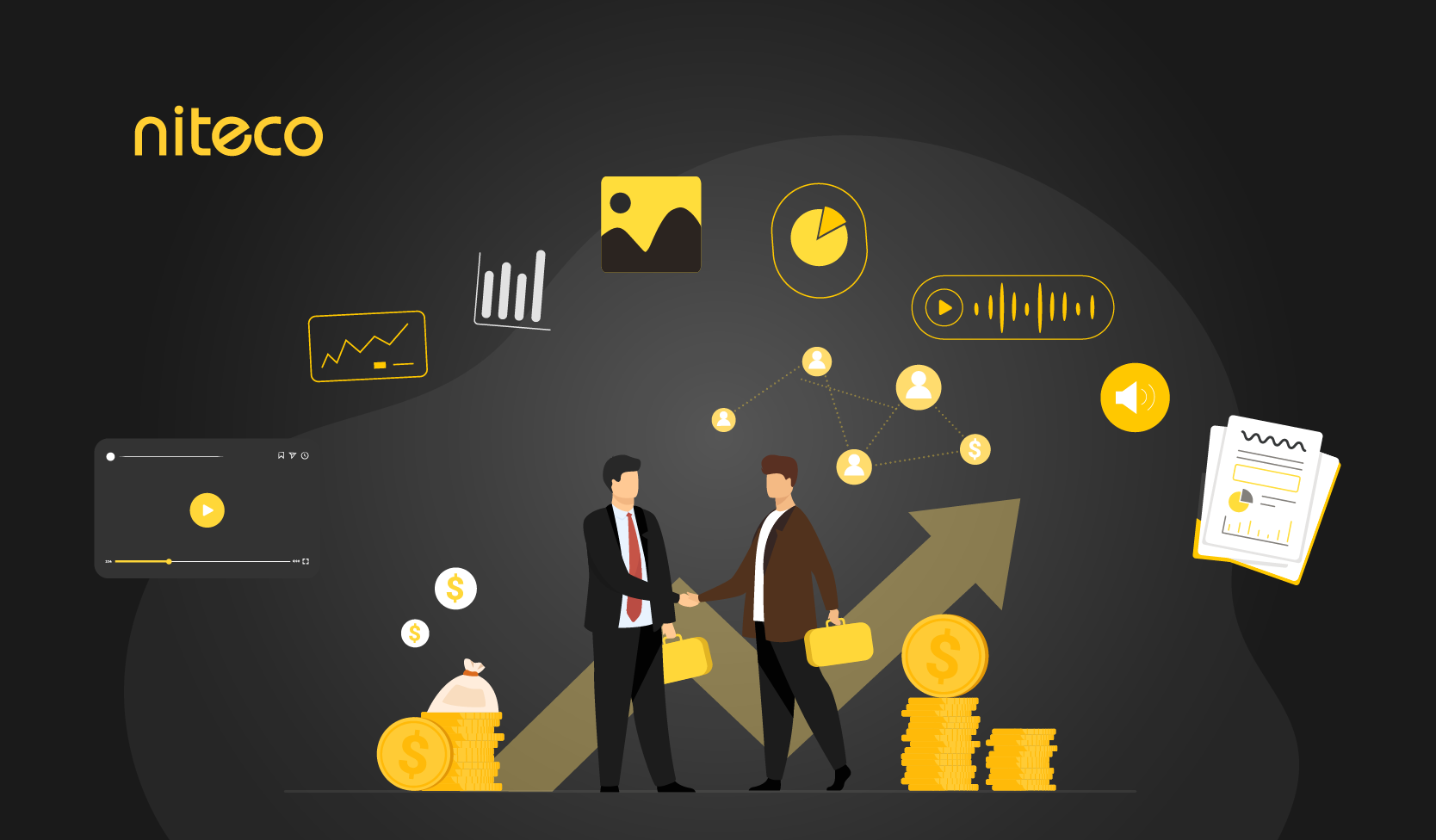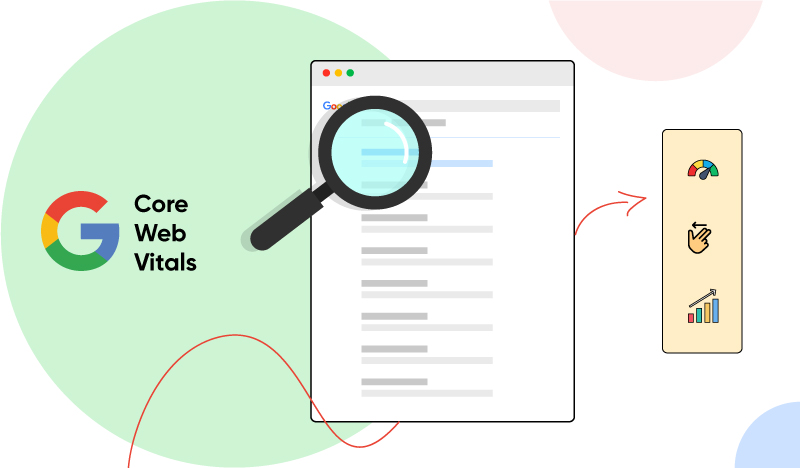Imagine you're shopping online for running shoes. You browse a sleek pair, add it to your cart, then get distracted and leave the site. The next day, you receive a generic promo email about winter coats. No follow-up. No context. That’s what fragmented customer journeys look like.
A fragmented customer journey is a common challenge that leads to lost conversions, poor customer engagement, and missed opportunities for businesses. But what if there was a powerful way to weave these disparate interactions into a seamless, personalized narrative? Marketing automation offers precisely that solution.
This guide breaks down how customer journey automation can unify every touchpoint and drive growth. Let's dive in!
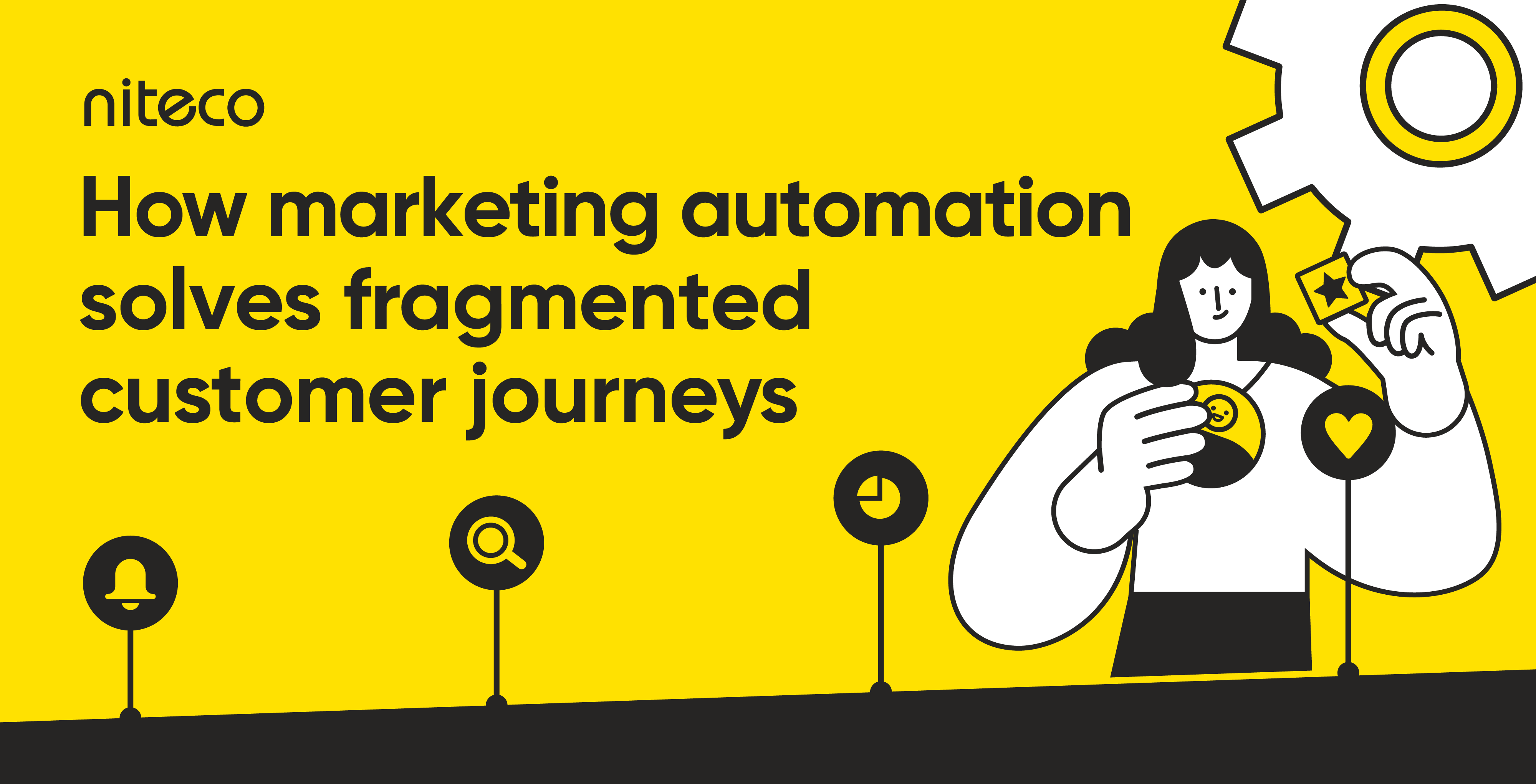
What is customer journey automation?
At its core, customer journey automation is the strategic use of technology to guide customers through personalized, data-driven experiences across all touchpoints. It’s about creating a coherent and intuitive path for your customers, from their very first interaction with your brand to becoming loyal advocates.
According to IBM’s Customer Experience Automation (CXA) process (IBM, 2024), the key components include:
- Orchestration: This involves visually mapping and managing the entire customer journey. By leveraging data, businesses can identify critical touchpoints and automate interactions to ensure a smooth progression.
- Segmentation: Not all customers are the same. Segmentation allows you to group customers based on shared behaviors, demographics, or preferences, enabling the delivery of highly targeted and relevant content.
- Personalization: Tailoring interactions on an individual level makes customers feel seen and valued. This could range from personalized product recommendations to custom email greetings.
- Automation: This is where the magic happens. Marketing automation platforms execute messages and workflows in real-time, such as sending a follow-up email after a website visit or routing a customer query to the most appropriate support agent without manual intervention.
These capabilities extend across various channels, including email, web, mobile apps, social media, and live chat, ensuring a consistent brand experience wherever your customer interacts. So, why does this matter so much? According to Salesforce, 79% of customers expect consistent experiences across channels, yet a staggering 55% report that this rarely happens. Customer journey automation directly addresses this gap, making engagement seamless and aligned.
Why fragmented journeys happen (and why they hurt)
Ever wonder why a customer drops off even after showing clear interest? One major reason is a fragmented customer journey.
Fragmented customer journeys primarily occur when marketing, sales, and support teams operate in silos, each using disconnected tools and managing their own pockets of customer data. This means every customer interaction - be it via email, social media, a website visit, or live chat - happens in isolation, without a unified view of the user.
This siloed approach inevitably leads to a cascade of negative consequences:
- Inconsistent or repetitive messaging: Customers might receive conflicting information or be bombarded with the same message across different channels.
- Delayed or irrelevant follow-ups: Without a consolidated view of their journey, a customer who just made a purchase might receive an abandoned cart reminder, or a lead interested in a specific product might get generic newsletters.
- Frustrating experiences that push customers away: When customers feel misunderstood or ignored, their patience wears thin, leading to disengagement and a diminished perception of your brand.
In today's hyper-connected world, customer expectations are higher than ever. Based on insights from McKinsey & Company, 71% of consumers expect brands to deliver personalized experiences. If their journey feels broken or impersonal, they are likely to disengage, significantly hurting trust, loyalty, and ultimately, revenue potential. The cost of a fragmented journey isn't just a missed sale; it's a damaged relationship.
How marketing automation bridges the gaps
At Niteco, we’ve seen firsthand how fragmented experiences hold brands back. As a global digital agency, we help enterprise businesses streamline complex systems into smart, scalable marketing engines - and our work with Electrolux is a standout example.
Niteco helped Electrolux transform fragmented customer experiences into data-driven, personalized journeys using Lytics, a customer data platform. By tracking user behavior across web and email, we segmented audiences and launched automated campaigns tailored to real interests.
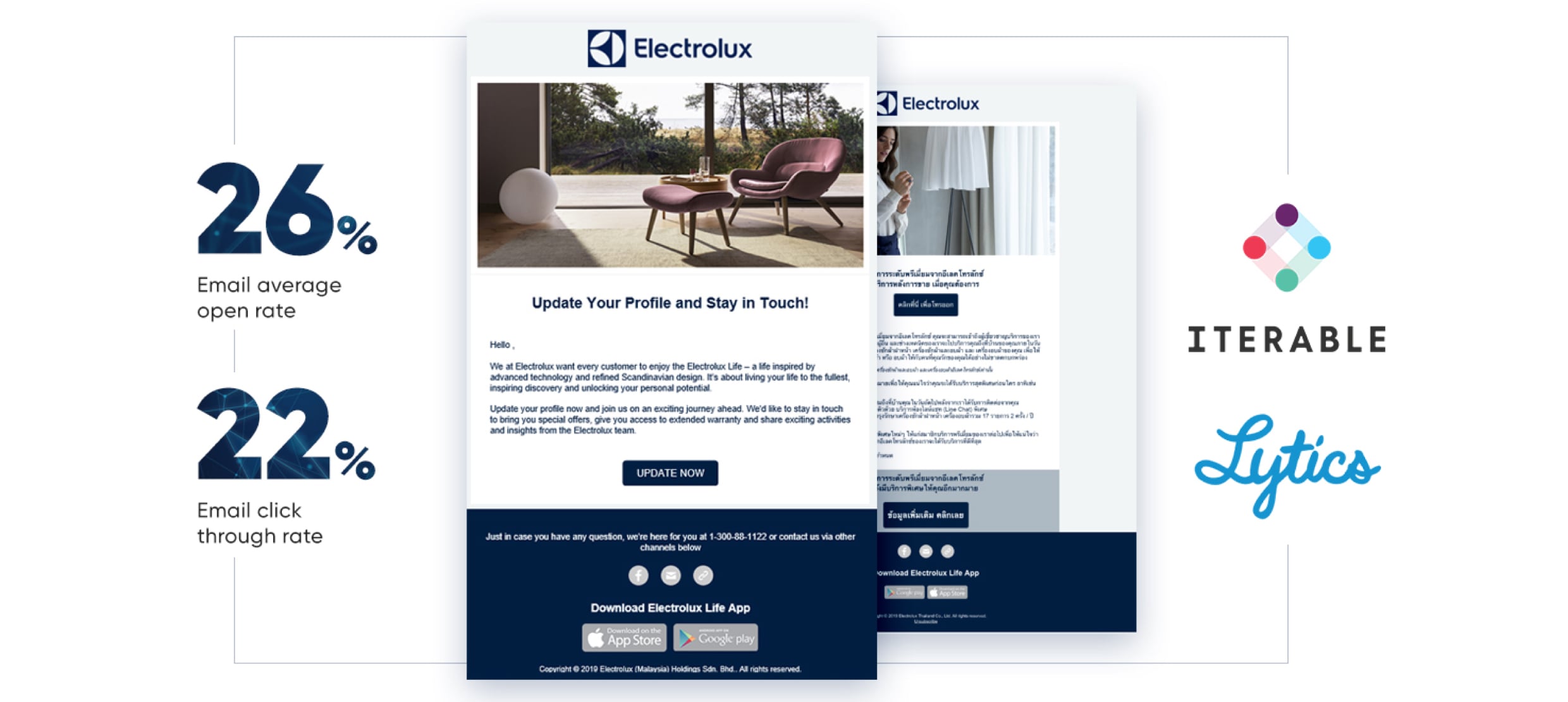
These campaigns didn’t just lift results, they made the entire customer journey feel more relevant, timely, and personal while saving Electrolux time and resources through automation. This experience has provided us with invaluable insights into how automation effectively bridges the gaps in the customer journey.
From our real lessons and experiences, we’ve learned that successful marketing automation hinges on 4 key pillars:
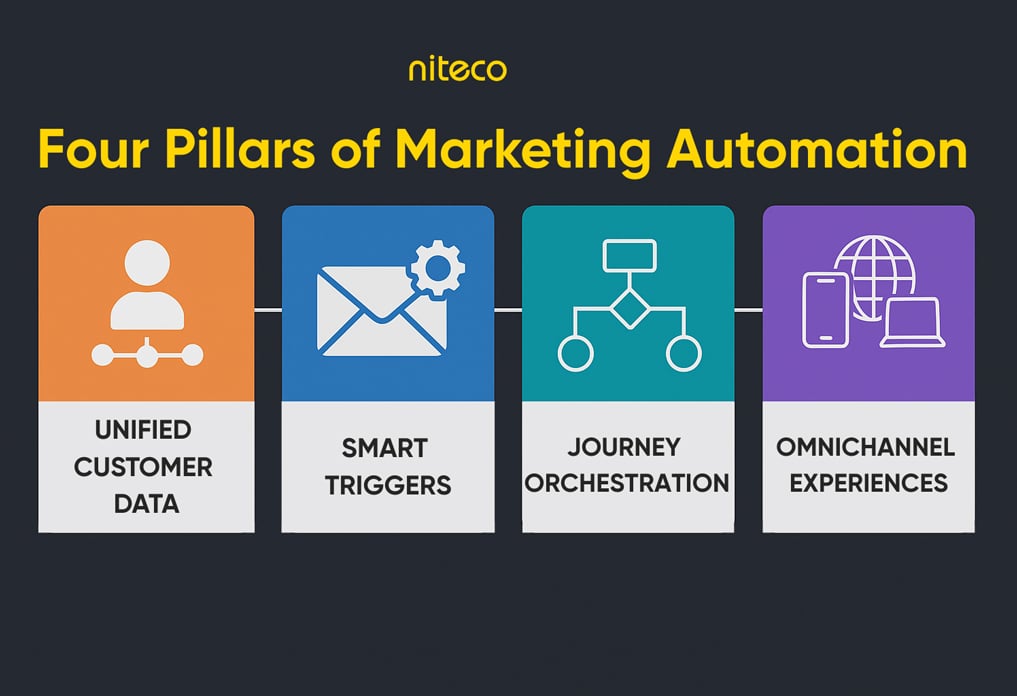
Unified customer data
A powerful marketing automation platform serves as the central nervous system for your customer data. It seamlessly connects information from all touchpoints – email interactions, website visits, mobile app usage, social media engagements, and more – into a single, comprehensive customer profile.
This holistic view allows businesses to understand the full picture of a customer's behavior, preferences, and journey stage, eliminating data silos that lead to fragmented experiences.
Smart triggers
Imagine a customer browsing your product page but not making a purchase. With marketing automation, this action can serve as a "smart trigger." Based on specific customer actions like signing up for a newsletter, clicking on an email link, or abandoning a shopping cart, the platform automatically dispatches personalized messages through various channels – be it email, SMS, or push notifications.
This happens without any manual intervention, ensuring messages are timely and highly relevant. Our insights on data-driven email marketing automation highlight how these smart triggers significantly improve message relevance and timing, leading to higher engagement.
Journey orchestration
Marketing automation empowers marketers to visually map and orchestrate the entire customer journey. From a welcome email series for new subscribers to re-engagement campaigns for inactive users, each step is designed to be timely and relevant.
These automated flows can incorporate multiple decision points and responses, dynamically adapting to user behavior. For instance, if a customer opens an email but doesn't click, the system can automatically send a follow-up with a different call to action.
Omnichannel experiences
The best marketing automation platforms are designed to handle interactions across all channels in real-time, ensuring true omnichannel consistency.
If a customer interacts with your brand on social media, then via email, and later through your mobile app, the system responds instantly and maintains a consistent message. This seamless experience prevents customers from feeling like they are starting over with each new interaction, fostering a sense of continuity and trust. To elevate this even further, your CX design must be intentional across every touchpoint, here’s how to engage your audience through customer experience design.
If you’re unsure which marketing automation tool is the right fit for your business needs, our experts have broken down the top options to guide your decision-making process. Find the perfect marketing automation tool for your business.
Conclusion
Companies that embrace automation not only meet these evolving customer expectations - they exceed them, fostering deeper engagement, stronger loyalty, and ultimately, significant growth. The sooner you start leveraging the power of marketing automation to unify your customer journey, the faster you'll see tangible results and build lasting customer relationships.
Ready to transform your customer interactions and drive significant business growth? Connect with our experts and let’s make it happen.
FAQs
It’s the use of technology and automated workflows to guide customers through personalized, consistent experiences across email, web, mobile, and other channels. It helps brands deliver timely, relevant interactions at scale without the silos.
It reduces friction and guesswork by responding to customer behavior in real time. From abandoned carts to product recommendations, automation ensures each touchpoint is relevant and aligned - improving trust, satisfaction, and conversion rates.
Because manual efforts can’t scale. Automation bridges data silos, aligns messaging, and enhances performance across every stage of the funnel.

